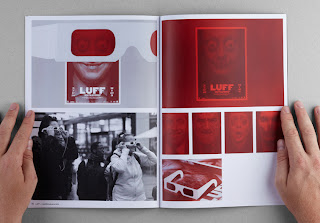Harry Houdini - Illusionist
Siegfried & Roy - Magicians/Illusionists
David Copperfield - Magician/Illusionist
Steven Diamond - Illusionist
David Blaine - Magician
Categories of effect
There is discussion among magicians as to how a given effect is to be
categorized, and disagreement as to what categories actually exist—for
instance, some magicians consider "penetrations" to be a separate
category, while others consider penetrations a form of restoration or
teleportation. Some magicians today, such as
Guy Hollingworth[4] and
Tom Stone[5]
have begun to challenge the notion that all magic effects fit into a
limited number of categories. Among magicians who believe in a limited
number of categories (such as
Dariel Fitzkee,
Harlan Tarbell, S.H. Sharpe), there has been disagreement as to how many different types of effects there are. Some of these are listed below.
- Production: The magician produces something from nothing—a
rabbit from an empty hat, a fan of cards from thin air, a shower of
coins from an empty bucket, a dove from a pan, or the magician him or herself, appearing in a puff of smoke on an empty stage—all of these effects are productions.
- Vanish: The magician makes something disappear—a coin, a cage
of doves, milk from a newspaper, an assistant from a cabinet, or even
the Statue of Liberty. A vanish, being the reverse of a production, may use a similar technique, in reverse.
- Transformation: The magician transforms something from one state into another—a silk handkerchief changes colour, a lady turns into a tiger,
an indifferent card changes to the spectator's chosen card. A
transformation can be seen as a combination of a vanish and a
production.
- Restoration: The magician destroys an object, then restores it back to its original state—a rope is cut, a newspaper is torn, a woman is sawn in half, a borrowed watch is smashed to pieces—then they are all restored to their original state.
- Teleportation: The magician causes something to move from one
place to another—a borrowed ring is found inside a ball of wool, a
canary inside a light bulb, an assistant from a cabinet to the back of
the theatre. When two objects exchange places, it is called a
transposition: a simultaneous, double teleportation.
- Escape: The magician (an assistant may participate, but the
magician himself is by far the most common) is placed in a restraining
device (i.e. handcuffs or a straitjacket)
or a death trap, and escapes to safety. Examples include being put in a
straitjacket and into an overflowing tank of water, and being tied up
and placed in a car being sent through a car crusher.
- Levitation: The magician defies
gravity, either by making something float in the air, or with the aid of
another object (suspension)—a silver ball floats around a cloth, an
assistant floats in mid-air, another is suspended from a broom, a scarf
dances in a sealed bottle, the magician hovers a few inches off the
floor. There are many popular ways to create this illusion, including Asrah levitation, Balducci levitation, Looy's Sooperman, and King levitation. Much more spectacular is the apparent free flight flying illusion that is often performed by David Copperfield and more recently by Peter Marvey (who may or may not be using a technique similar to that of David Copperfield). Harry Blackstone's floating light bulb, in which the light bulb floats over the heads of the public, is also spectacular.
- Penetration: The magician makes a solid object pass through
another—a set of steel rings link and unlink, a candle penetrates an
arm, swords pass through an assistant in a basket, a saltshaker
penetrates the table-top, a man walks through a mirror. Sometimes
referred to as "solid-through-solid".
- Prediction: The magician predicts the choice of a spectator,
or the outcome of an event under seemingly impossible circumstances—a
newspaper headline is predicted, the total amount of loose change in the
spectator's pocket, a picture drawn on a slate.
Many magical routines use combinations of effects. For example, in
"cups and balls" a magician may use vanishes, productions, penetrations,
teleportation and transformations as part of the one presentation.















































